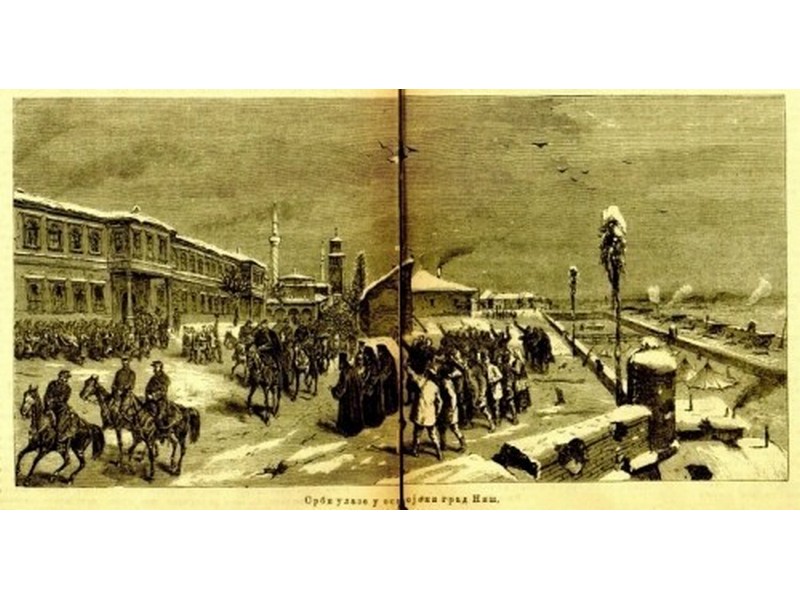

PUBLISHED 10.01.2020

After almost five centuries of slavery, on January 11, 1878, Nis was liberated from the Turks and annexed to Serbia.Fighting for the liberation of Nis began in mid-December 1977, when the Ibar, Moravian and Danube divisions crossed the Serbian-Turkish border and took positions northwest of the city, approaching it five to eight kilometers. The Ibar Division penetrated further south and cut the link between Nis and Leskovac. Subsequently, the Serbian army conquered Pirot and Bela Palanka, disabling the Turkish garrison in Nis from linking troops to Sofia and breaking into Selicevic Mountain by closing the ring around Niš and on the south side.
The total Serbian forces had 15,000 troops and 102 cannons, while the Turkish forces had 5,000 soldiers and 267 cannons. The main attack on Nis, under the command of Colonel Jovan Belimarkovic, was carried out by the Sumadija Corps from the slopes of Selicevica Mountain, which was considered the “gateway to Nis” because the southern part of the city was weakly fortified by the Turks. Already in the first attacks, Markovo Kale, Ćurlinski Visovi, and Velika Kamara were conquered, and with the strong effect of artillery and the cooperation of other units, the last fortifications on Gorica were threatened. At the same time, Serbian forces, under the command of Colonel Milojko Lesjanin, were also attacking from the northwest.When the first shells began to fall on the city, the Turkish elders of the city, after some tactics and hesitation in waiting for assistance, finally signed the Convention on the Surrender of Niš.
In the liberated Nis, handing over the city, the Serbian flag at the Stambol Gate of the Nis Fortress was erected by Todor P. Stankovic, from Nis, member of the secret committee for liberation. In the battle for Nis, 120 Serbian soldiers were killed and 791 wounded. Prince Milan Obrenovic, commander-in-chief of the Serbian army, solemnly entered Nis, just days after his liberation. Liberation struggles in other parts of southeastern Serbia soon ended successfully, and Prince Milan and the Serbian government continued diplomatic activity to annex the newly liberated territories to Serbia, as was done at the Berlin Congress.
Prince Milan will then buy a house in Nis, and at his request, Nis will be the site of frequent sessions of the National Assembly (especially in the period 1883-1886) and of the Serbian government, thus becoming the second capital of Serbia